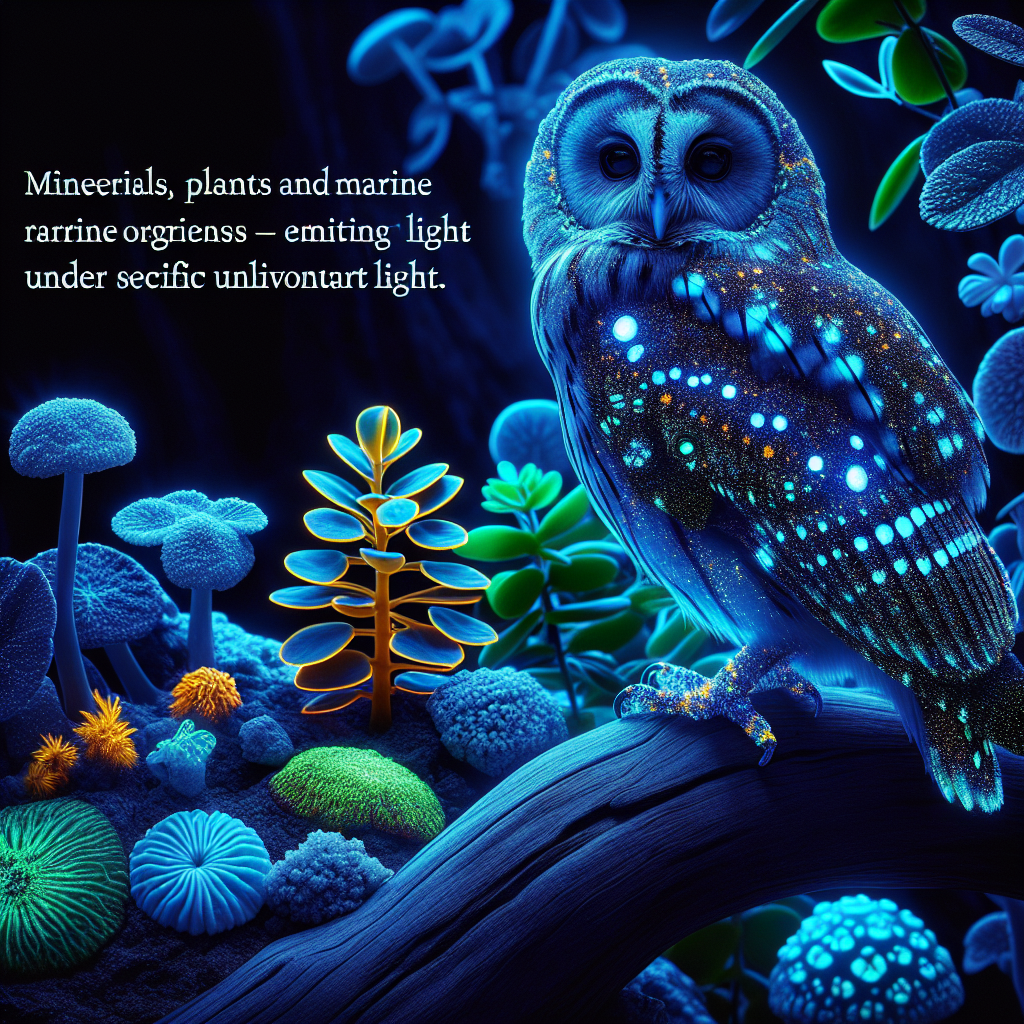In nature, some minerals, plants, and marine organisms contain fluorescent substances that emit unique light under specific ultraviolet light. Recently, American scientists discovered that the feathers of an owl also contain fluorescent components, which not only help them identify differences between individuals of the same species but also open up new directions for future research on the diversity within the species.
The physical differences between species are very obvious and can be easily distinguished by the naked eye. However, there are many subtle differences among individuals of the same species that require methods such as tagging, microchipping, and photography to differentiate them.
In previous studies, it was found that some bird feathers contain ultraviolet reflection properties invisible to the human eye, but understanding these feathers’ ultraviolet-sensitive characteristics remains limited. The fluorescent pigments in these bird feathers absorb ultraviolet light and then release unique light visible to the human eye.
The latest research from the College of Arts and Sciences at Drexel University in Pennsylvania, USA, reveals that the feathers of a species known as the “Long-eared Owl” (Asio otus) contain fluorescent pigments. Simply by exposing them to ultraviolet light, these feathers reveal unique patterns of fluorescence, with different individuals of the same species displaying varied fluorescent patterns. This study was published in “The Wilson Journal of Ornithology” at the end of March this year.
In the natural world, many male birds use bright feathers to attract females, making them more colorful and attractive than females. However, the functions of these pigments may not be limited to mating signals and could have deeper meanings. Therefore, scientists aim to understand the true significance of these fluorescences, including their distribution, production, and other hidden features of Long-eared Owls and other bird species.
The research team captured migrating Long-eared Owls in the Upper Peninsula of Michigan in the spring of 2020 and measured changes in the fluorescent pigments (porphyrins) in the feathers of 99 Long-eared Owls using a fluorescent spectrometer that detects the fluorescent signals emitted after absorbing ultraviolet light.
Under special equipment, they found that the fluorescent pigments in Long-eared Owl feathers are mainly located on the barbed branches or undersides of the wings, appearing “pink,” and these areas receive less sunlight exposure. These fluorescent pigments have photosensitive properties and degrade when exposed to sunlight, causing the fluorescence brightness of the feathers to decrease as they age.
The experimental results showed that the concentration of fluorescent pigments in Long-eared Owl feathers varies with age and gender. Adult and female owls have the highest fluorescence pigment concentration, with females having higher levels than males. It was also found that the fluorescence pigment concentration in males and small females is highly positively correlated with body size (weight). However, the body size of larger female Long-eared Owls is not related to the fluorescence pigment concentration, suggesting that the fluorescence pigment in feathers may have reached saturation.
Therefore, the concentration of fluorescent pigments in feathers may serve as a communication signal for age, gender, or body size, but these pigments may also have other unknown functions such as mating or insulation.
Researchers stated that they will further explore areas in avian biology that have not been adequately researched to clarify the potential relationship between “visible pigments” in bird feathers (such as eumelanin and pheomelanin) and “hidden pigments” (such as fluorescent pigments), as well as explore any other unknown functions.
Emily Griffith, a doctoral student in the Department of Biodiversity, Earth, and Environmental Sciences at Drexel University, told the university’s newsroom, “Our research shows that the concentration of fluorescent pigments in the feathers of female Long-eared Owls is much higher than in males. This challenges the inherent view that most male birds are more colorful. Furthermore, this characteristic is not a simple binary opposition, as the fluorescence pigment concentration is associated with the body size, age, and gender of these owls.”

